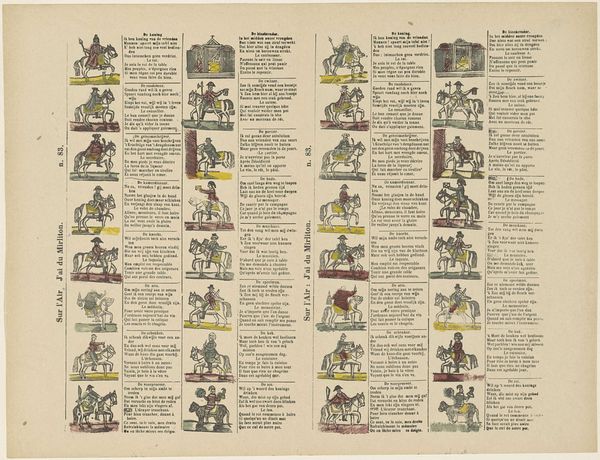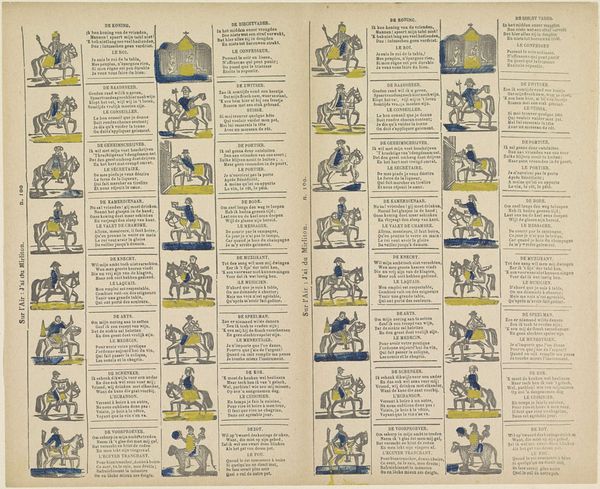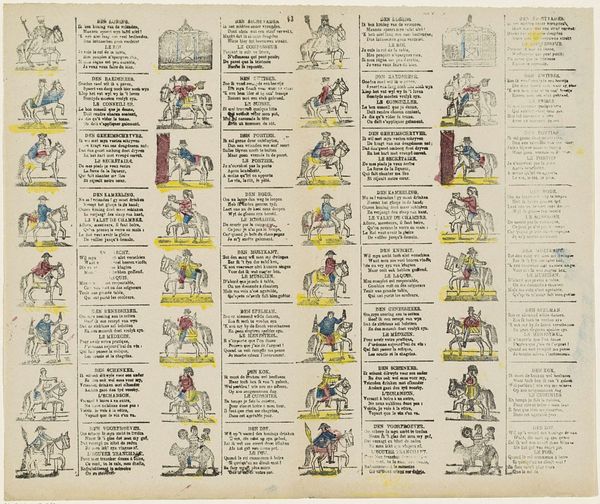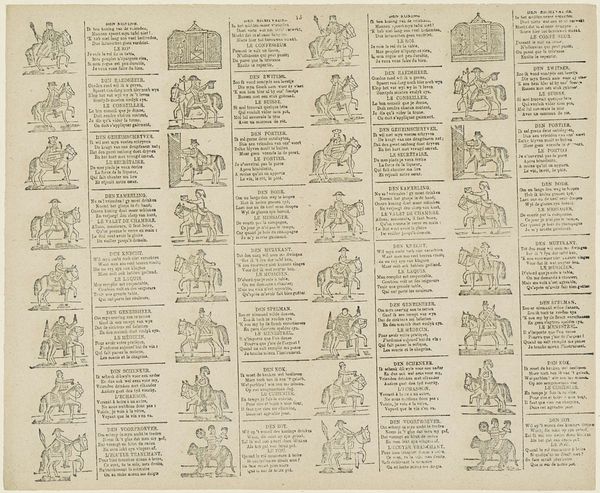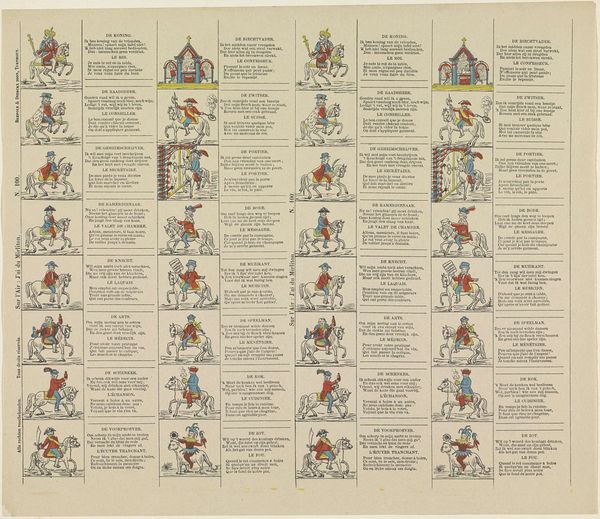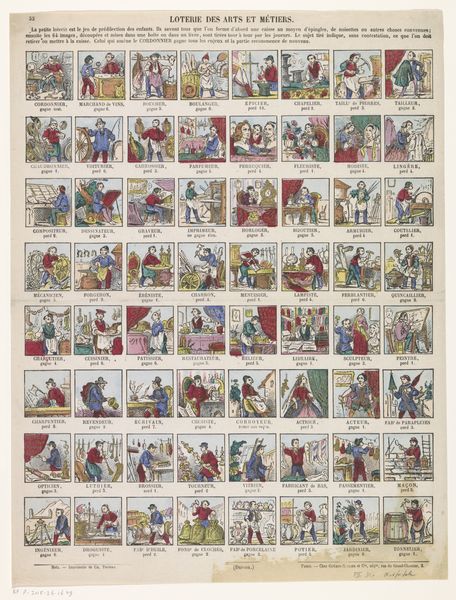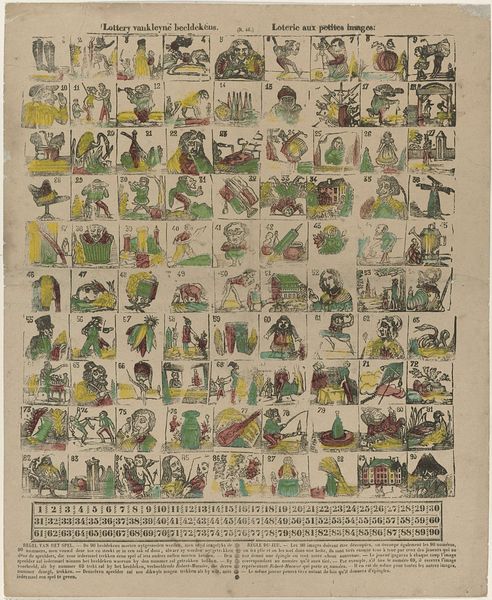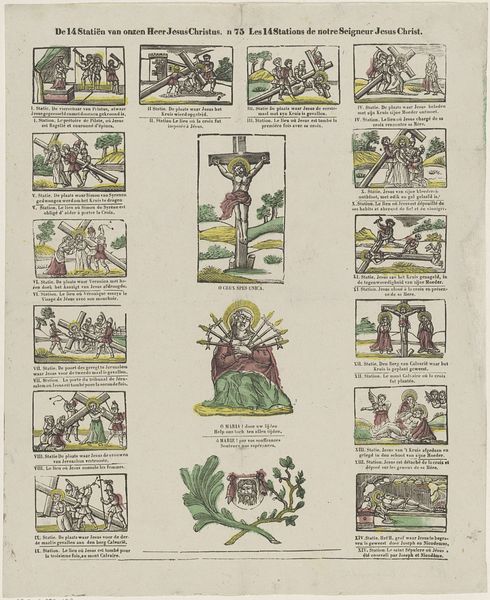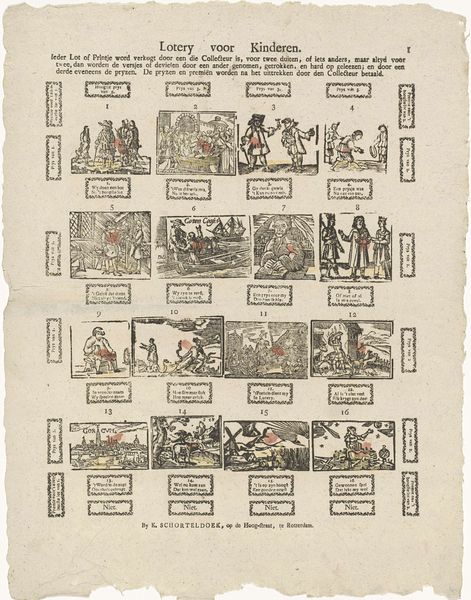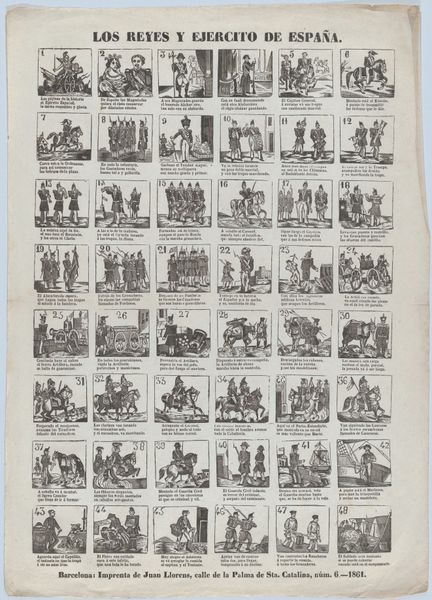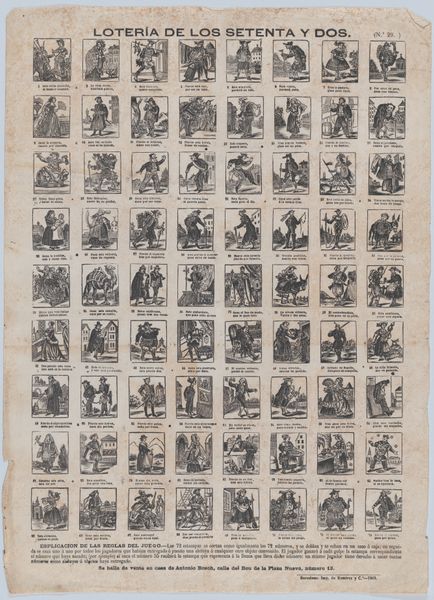
print, engraving
#
comic strip
# print
#
genre-painting
#
engraving
Dimensions: height 332 mm, width 429 mm
Copyright: Rijks Museum: Open Domain
Curator: My initial impression is of something…miniaturized. There’s such detail crammed into a small space! The individual scenes have such character, despite their tiny scale. Editor: This print, entitled “Driekoningenbriefjes,” and attributed to Glenisson & Zonen from around 1856-1900, gives us a glimpse into popular culture and social dynamics of that time. What we see here are basically trade cards, made through engraving. Curator: Trade cards? Ah, like business cards but with pictures! That does contextualize the miniature feel—a snapshot of everyday occupations rendered in a decorative fashion. What does "Driekoningenbriefjes" mean, exactly? Editor: It translates roughly to “Three Kings Cards,” linking these to Epiphany celebrations, a period when societal roles could be playfully subverted through role-playing. Curator: So, not just advertising, but also commenting, in a tongue-in-cheek manner, on social structure. I see soldiers, merchants, even what looks like a cook or server, all rendered with the same level of, well, slightly cartoonish seriousness. What social anxieties, would you say, do they reflect? Editor: These were precarious times economically. The cards often highlight the importance of various trades within the social fabric and may have affirmed individual worth at a moment of upheaval. Plus, visual literacy was growing. It also helped to be able to place yourself on the card hierarchy as some trades where regarded better than others. Curator: Looking closer, I see a visual language here, but a slightly ambiguous one. Each card seems to have two distinct registers: an image and a text box. I wish I knew the content of those text boxes... What kind of statements or rhymes are they using? Editor: They offer simple rhymes explaining the card. The use of Dutch alongside what seems to be an attempt at French highlights a complex intersection of language and cultural capital. But even to me it is unreadable! It encourages the owner of the card to try to be literate and well versed in two separate cultures. Curator: Indeed. It makes me want to delve further into how language, class, and national identity are all interwoven. Editor: Right, this print serves not only as an aesthetic object, but also as a window into how social structures manifested and played out in the day-to-day lives of average folk. Curator: Definitely, “Driekoningenbriefjes” are not simply for collecting. These are little documents loaded with meaning, reflecting society in the hand of those people.
Comments
No comments
Be the first to comment and join the conversation on the ultimate creative platform.
